Inside the plant that uses the Patagonian winds to kick-start deep decarbonization.
Commissioned in December 2022 in the Southern tip of Chile, the Haru Oni demonstration plant could pave the way for a viable alternative to fossil fuels: It produces synthetic e-fuels from hydrogen that can help the fight against climate change. MAN Energy Solutions provided the e-methanol reactor to the plant.
By Jean-Cosme Delaloye
The winds sweeping through the Patagonian pampas near Punta Arenas in southern Chile are relentless and brutal. “For people who grew up in the region of the Magellan Strait like me, the winds used to be a constant battle”, said Jonathan Ruiz, MAN Energy Solutions’ Sales Manager in Chile. “Now they offer a tremendous opportunity for growth in decarbonization and region development”. People driving along the scenic “End of the World” Route 9, north of Punta Arenas, can see the reason for his optimism from far away; a tall 3.4 MW wind turbine is towering over the herds of sheep and ostrich-like Darwin’s rheas roaming the plains.
The complex is called Haru Oni or “land of wind”, in the language spoken by the Selk’nam and Tehuelches native peoples. Launched in December 2022 by Highly Innovative Fuels (HIF), this demonstration plant potentially represents a huge step forward in the battle against climate change. It is able to use the constant winds to produce hydrogen and then turn that hydrogen into a synthetic e-fuel chemically identical to gasoline.
“The plant takes renewable energy produced by the wind turbine and turns it into hydrogen in the electrolyzer”, explained Clara Bowman, HIF Global COO. “That hydrogen is then taken and combined with CO2 captured from the atmosphere in a reactor manufactured by MAN Energy Solutions. The reactor produces a methanol that is exactly the same as fossil methanol, except that it is renewable. We then take this methanol and turn it into gasoline, which can be used as substitute for fossil fuels”.
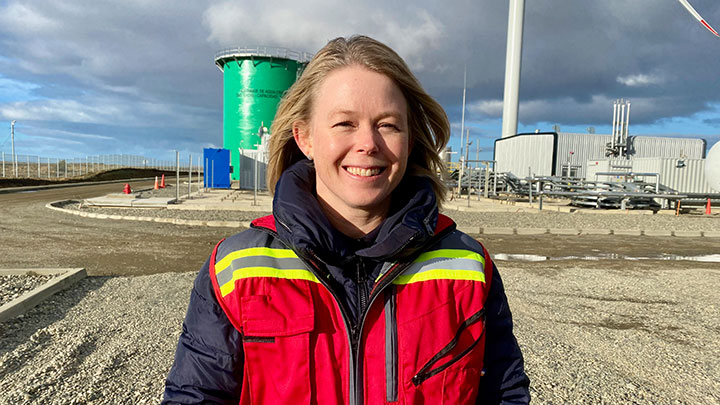
“We feel that there is a real spirit here, and we're very excited to be leading the world in these decarbonization efforts,” said Clara Bowman, COO of HIF. ©Jean-Cosme Delaloye
No longer a fantasy
The e-methanol reactor provided by MAN Energy Solutions converts hydrogen and carbon dioxide into methanol. The methanol molecules are then transformed into gasoline. Haru Oni will produce about 35,000 gallons of synthetic gasoline per year, which will initially be used by Porsche for its Mobil 1 Super Cup races and Experience Centers. Seven Porsche Panameras were recently brought to Haru Oni to showcase the capabilities of the plant. They were filled up with synthetic e-fuel and drove around the region of the Strait of Magellan. For Wagner Canelhas, “this proves e-fuels are no longer a fantasy.”
“The reactor we have at Haru Oni is a pilot reactor but it can be easily adapted to larger-scale plants”, said Canelhas. “As soon as the other companies want – we can move ahead”. Another benefit of the synthetic e-fuels produced at Haru Oni, is that they can be transported from remote Patagonia in trucks or ships, the same way fossil fuels would be. This is key in a region that has just one main road connecting it to the rest of the world.
The demonstration plant currently makes up to 600 tons of methanol per year with its first commercial stage in Chile, HIF aims to scale up: The company is planning a 325-megawatt wind farm, which would ultimately help it reach its goal of producing up to 140,000 tons of synthetic methanol per year.
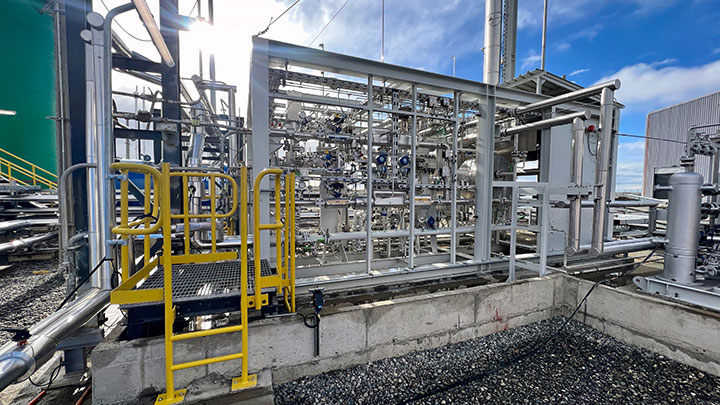
The e-methanol reactor provided by MAN Energy Solutions converts hydrogen and carbon dioxide into methanol. ©Jean-Cosme Delaloye
“The reactor we have at Haru Oni is a pilot reactor but it can be easily adapted to larger-scale plants”
Next: e-fuel for ships?
As the gateway to Antartica, Punta Arenas is one of the strategic ports in Chile and it handles about 86,000 tons of cargo each year (currently investing about USD 50 Mio to expand its capacity). In the future, synthetic fuels could also power ships, according to Gabriel Guevara, MAN Energy Solutions Managing Director for Chile. “Carbon-neutral methanol will make a huge contribution in the decarbonization of the maritime industry, because this industry is responsible for about 3 percent of global CO2 emissions.”
Air transportation is also a potential market for synthetic e-fuels. “We can make electric cars”, underscored Wagner Canelhas, “But not planes or ships. If you want to use batteries, your plane can’t even take off or your ship will sink. So for now, only e-fuels are the solutions for ship and air transportation.”
For the past 20 years, Chile has tremendously increased its capacity to generate solar and wind power and it launched in 2020 its green hydrogen strategy. By 2030, the Latin American country aims to generate 35 gigawatts of renewable power to produce hydrogen. Patagonia is a key piece in that strategy because it is where green hydrogen could be produced at the lowest cost because of the winds. This in turn, would boost the production of e-methanol and help turn Chile into a major clean energy provider. “In the next 10 to 15 years, we might be having 10-gigawatt plants, which is tremendous”, concluded Canelhas. “The e-fuels may be the new revolution we needed”.
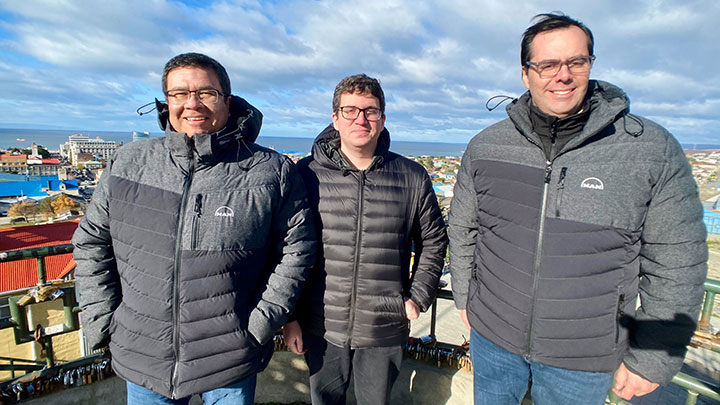
Gabriel Guevara, MAN Energy Solutions Managing Director for Chile, Wagner Canelhas, Regional Sales Manager for DWE© Reactors and Apparatus, and Jonathan Ruiz, Sales Manager in Chile in Punta Arenas in southern Chile. ©Jean-Cosme Delaloye
Pioneering Spirit
The gasoline produced is carbon-neutral because when the CO2 is burnt, it goes back into the air from which it was captured. “What is happening here is symbolic”, added Clara Bowman. “Ferdinand Magellan discovered the Strait bearing his name which connects the two hemispheres. This is a region of pioneers. So we feel that there is a real spirit here and we're very excited to be leading the world in these decarbonization efforts”.
Hydrogen is a source of hope in the fight against climate change. In April, the International Energy Agency (IEA) concluded that it could contribute to a "clean energy transition” amid a worldwide shift away from fossil fuels. Last year, the International Renewable Energy Agency (IRENA) predicted that hydrogen would cover 12 percent of the world’s energy demand by 2050, up from 2.5 percent today. However, most of the hydrogen currently produced still comes from fossil fuels, which means there is no real benefit in fighting global warming yet.
Haru Oni can help change that by leading the way in the production of green hydrogen and e-fuels. “You have strong and constant winds, and also plenty of space here”, said Wagner Canelhas, MAN Energy Solutions’s Regional Sales Manager for DWE® Reactors and Apparatus. “You have all the ingredients you need to have cheap renewable power, which is the key to have a cheap, reliable fuel that can compete with the fossil fuels, because no one is going to embrace renewable fuels if they cost way more”.
About the author
Jean-Cosme Delaloye is a New York-based reporter and award-winning filmmaker, working for various European media outlets with a focus on South America and energy and health topics.
The Haru Oni e-fuels plant
The Haru Oni Demonstration Plant is a pilot program in the Magallanes region of Patagonia. Utilizing a 3.4 MW wind turbine and a e-methanol reactor provided by MAN Energy Solutions, the plant converts hydrogen and carbon dioxide into methanol. The methanol molecules are then transformed into gasoline. Haru Oni will produce about 35,000 gallons of synthetic gasoline per year.
Explore more topics
-
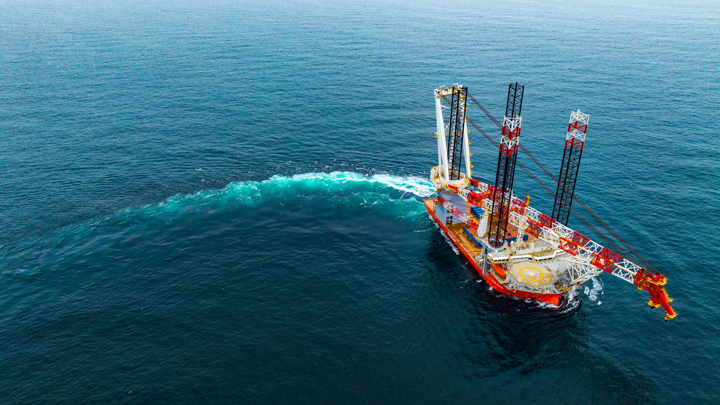
The latest-generation wind turbine installation vessel
A new wind turbine installation vessel with a customized-engine configuration lets offshore wind contractor Cadeler transport and lift more powerful turbines in even rougher locations – and they’re saving emissions while they are at it.
-

Hapag Lloyd LNG container vessel
Hapag-Lloyd’s new LNG-powered containership cuts emissions by a quarter immediately and by 95 percent with green methane
-
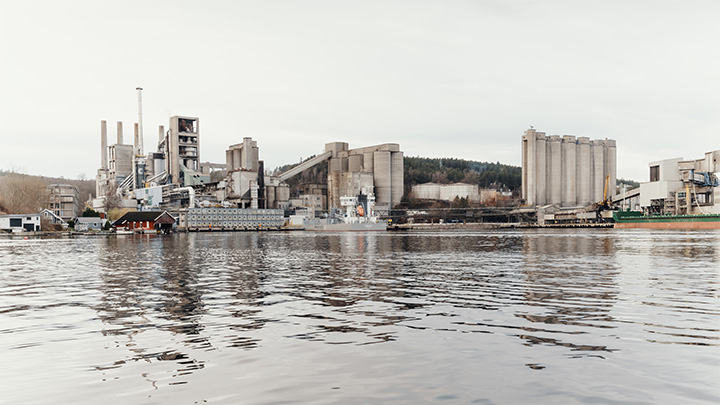
Heidelberg Materials: First CCS plant for cement industry
The first CCS facility for cement production in Brevik, Norway, is paving the way for carbon-neutral industrial processes.
MAN Energy Solutions is now Everllence.
We have adopted a new brand name and moved to a new domain: www.everllence.com. This page will also be relocated there shortly. We are working on shifting all pages to www.everllence.com.
